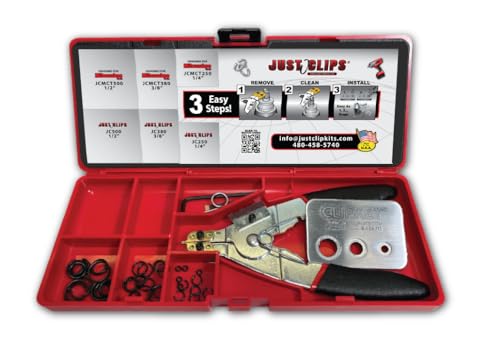




Whether you are a professional contractor or a DIY enthusiast, knowing how to operate a caulk gun is an essential skill. Caulk guns are commonly used for sealing cracks, gaps, and joints in various construction projects. This versatile tool allows you to apply caulk quickly and efficiently, creating a neat and professional finish.
Before you start using a caulk gun, it’s important to choose the right caulk for your project. There are different types of caulk available, such as silicone, acrylic, or latex caulk. Each type has its own properties and is suitable for specific applications. Consider factors like the material you’re working with and the location of the caulked area to select the appropriate caulk.
Once you have the right caulk, it’s time to load the caulk gun. Start by cutting the tip of the caulk tube at a 45-degree angle. Then, insert the caulk tube into the caulk gun, ensuring it fits securely. Most caulk guns have a plunger mechanism to control the flow of caulk. Pull the plunger back to create space for the caulk, and then release it to hold the caulk tube in place.
When you’re ready to start applying the caulk, hold the caulk gun firmly with one hand and place the tip of the caulk tube at a 45-degree angle to the surface you want to caulk. Slowly squeeze the trigger of the caulk gun to dispense the caulk. As you move the caulk gun along the surface, maintain a steady pressure on the trigger to ensure a continuous and even bead of caulk.
What Is a Caulk Gun and What Is It Used for?
A caulk gun is a handheld tool that is used for dispensing caulking materials, such as silicone or acrylic caulk. It is commonly used in home improvement projects and construction work. The caulk gun consists of a cartridge holder, a trigger mechanism, and a nozzle.
The cartridge holder holds the caulk tube and is designed to fit different sizes of cartridges. It has a rotatable rod that moves forward as the trigger is squeezed, pushing the caulk out of the tube.
The trigger mechanism is the part of the caulk gun that controls the flow of the caulk. When the trigger is pulled, it releases the pressure on the rod, allowing the caulk to be dispensed. Releasing the trigger stops the flow of caulk.
The nozzle is the end of the caulk gun that the caulk exits from. It can be cut to the desired size to control the size of the bead or caulking line. The nozzle also often has a built-in cutter for trimming the tip of the caulk tube.
A caulk gun is used for a variety of tasks, such as sealing gaps and cracks in windows, doors, and walls, filling in joints between tiles or baseboards, and even applying adhesive for construction or DIY projects. It is a versatile tool that can help achieve a professional-looking finish and provide a watertight seal.
It is important to handle a caulk gun properly to ensure efficient and accurate caulking. Understanding how to load the caulk tube, control the flow of caulk, and maintain the caulk gun can greatly improve the results of any caulking project.
Choosing the Right Caulk Gun
When it comes to operating a caulk gun, choosing the right one for your project is crucial. While all caulk guns may look similar, they vary in features and functionality. Here are a few factors to consider when selecting a caulk gun:
Type of Caulk Gun
There are two main types of caulk guns: manual and pneumatic. Manual caulk guns are operated by hand, whereas pneumatic caulk guns require an air compressor. Manual caulk guns are more common and suitable for most DIY projects. Pneumatic caulk guns are more powerful and often used in professional settings.
Size and Capacity
Caulk guns come in different sizes and capacities. The size refers to the length of the caulk tube that the gun can accommodate. It is essential to choose a caulk gun that can hold the desired tube size for your project. The capacity refers to the amount of caulk the gun can dispense. Consider the size of your project and the amount of caulk you anticipate needing.
Additionally, some caulk guns offer adjustable pressure settings and barrel lengths, allowing for more control and precision during application. These features are particularly useful for intricate projects or when working with different types of caulk.
By considering the type of caulk gun and the size and capacity requirements for your project, you can choose the right caulk gun that will make your caulking job more efficient and effective.
Preparation
Before using a caulk gun, it is important to properly prepare the area and gather all necessary materials. Follow these steps to ensure a successful caulking project:
- Prepare the surface: Clean the area where you plan to apply caulk. Use a wire brush or sandpaper to remove any dirt, dust, or loose paint. Make sure the surface is dry and free of any grease or oil.
- Mask off the area: Use painter’s tape or masking tape to protect any adjacent surfaces or areas that you do not want to be caulked. Take your time to ensure that the tape is applied accurately for clean, precise lines.
- Select the right caulk: Choose the appropriate type of caulk for your specific project. There are different types of caulk available, such as silicone caulk for bathrooms and kitchens, and acrylic caulk for general sealing purposes. Read the labels carefully to make sure you are using the correct caulk for the job.
- Prepare the caulk gun: Load a cartridge of caulk into the caulk gun. Cut the tip of the cartridge at a 45-degree angle using a utility knife or caulk cutter. The size of the opening should match the size of the bead you want to apply.
- Have a damp rag or sponge nearby: Keep a damp cloth or sponge within reach to quickly wipe away any excess caulk or smooth the caulk bead if needed. This will help you achieve a professional-looking finish.
By properly preparing the area and having all necessary materials on hand, you will be ready to effectively operate a caulk gun and achieve a clean, professional caulking job.
Using a Caulk Gun
Operating a caulk gun is a simple process that can be mastered with a little practice. Follow these steps to effectively use a caulk gun:
1. Prepare the caulk gun and caulk tube:
Before you begin, make sure that the caulk gun is clean and in good working condition. Insert the caulk tube into the gun and cut the tip of the caulk tube at a 45-degree angle using a utility knife. Ensure that the hole is small enough to control the flow of caulk.
2. Load the caulk gun:
Apply pressure to the back of the caulk tube and squeeze the trigger of the caulk gun until the caulk begins to flow out of the tip. This will prime the caulk gun and ensure that it dispenses smoothly during use.
3. Position the caulk gun:
Hold the caulk gun at a 45-degree angle with the tip of the caulk touching the desired surface. This angle helps control the flow of caulk and ensures a uniform application.
4. Apply the caulk:
Slowly squeeze the trigger of the caulk gun, moving it steadily along the desired area. Apply even pressure to control the flow of caulk, being careful not to apply too much or too little. Use a consistent motion to achieve a smooth and even line of caulk.
5. Finish the application:
Once you have applied the desired amount of caulk, release the pressure on the trigger and quickly press the release lever or button to stop the flow of caulk. Smooth out the caulk line using your finger or a caulk finishing tool for a professional-looking finish.
Remember to always read and follow the instructions provided by the caulk manufacturer for best results.
Tips and Tricks for Operating a Caulk Gun
Using a caulk gun may seem simple, but there are a few tips and tricks that can make your caulk projects go more smoothly and give you better results. Follow these tips to operate a caulk gun like a pro:
- Choose the right caulk for the job: Different caulks are designed for specific applications, such as silicone caulk for kitchens and bathrooms or acrylic caulk for paintable surfaces. Make sure to select the appropriate caulk for your project.
- Prepare the surface: Before applying caulk, clean the surface and remove any old caulk or debris. Use a scraper or putty knife to remove any loose material, and then wipe the area with a damp cloth or sponge.
- Cut the caulk tube tip at an angle: Use a utility knife to cut the tip of the caulk tube at a 45-degree angle. This will allow for a smoother application and better control of the caulk flow.
- Load the caulk tube into the gun: Insert the caulk tube into the gun, making sure the puncture rod is in the correct position. Some caulk guns have a built-in puncture tool, while others require you to manually puncture the seal with a nail or another sharp object.
- Practice your technique: Before applying caulk to your project, practice on a scrap piece of cardboard or paper. This will help you get a feel for the caulk gun and adjust your hand pressure to control the flow of caulk.
- Apply steady and even pressure: When applying caulk, squeeze the trigger with steady and even pressure. Avoid stopping and starting, as this can result in uneven caulk lines. Keep a consistent pace and maintain control over the caulk flow.
- Smooth the caulk: After applying caulk, use a caulk smoothing tool or your finger to smooth and shape the caulk. Wetting your finger with water or using a lubricant like dish soap can help prevent the caulk from sticking to your finger.
- Clean up excess caulk: Use a damp cloth or sponge to wipe away any excess caulk before it dries. If you accidentally get caulk on a surface that you don’t want it on, wipe it off immediately with a cloth moistened with rubbing alcohol.
By following these tips and tricks, you’ll be able to operate a caulk gun with confidence and achieve professional-looking results in your caulk projects.
Final Thoughts
Operating a caulk gun may seem intimidating at first, but with a little practice, it can become a simple and efficient tool to have in your DIY arsenal. Remember to always prepare your work area and clean up any excess caulk to ensure a professional-looking finish.
Before you start using the caulk gun, familiarize yourself with its parts and make sure it is in good working condition. Practice applying a small amount of caulk on a scrap piece of material to get a feel for the gun’s trigger and flow control.
When using the caulk gun, remember to apply consistent pressure on the trigger and move at a steady pace along the desired line or area. Avoid stopping or starting abruptly as it can create uneven lines or bumps in the caulk.
If you’re working with a silicone caulk that requires smoothing, keep a moist sponge or rag handy and use it to smooth the caulk immediately after application. This will result in a clean and professional-looking finish.
Lastly, remember to always properly store your caulk gun after each use. This will help preserve its lifespan and prevent caulk from drying out or leaking.
With these tips and a little patience, you’ll be able to tackle any caulk project with ease and confidence. Happy caulking!





